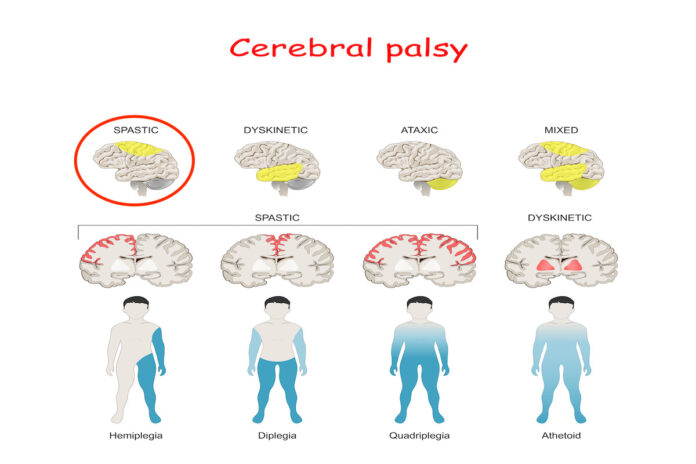
Cerebral Palsy (CP) is a group of permanent movement disorders that appear in early childhood. It is caused by abnormal development or damage to the parts of the brain that control movement, balance, and posture.
Symptoms
Symptoms of cerebral palsy vary widely depending on the type and severity of the condition but may include:
- Muscle stiffness or floppiness: Some children with cerebral palsy have stiff muscles and awkward movements, while others are too floppy.
- Poor coordination and balance: This can affect walking, running, or other activities that require coordination.
- Abnormal reflexes: The child may have exaggerated reflexes or lack of reflexes.
- Delayed development: Milestones such as crawling, sitting up, and walking may be delayed.
- Difficulty with fine motor skills: Tasks such as writing, using scissors, or picking up small objects may be challenging.
- Speech and communication difficulties: Some children with cerebral palsy may have difficulty speaking clearly or communicating effectively.
- Seizures: Seizures are more common in individuals with cerebral palsy compared to the general population.
Prevention
Prenatal care: Regular prenatal check-ups and medical care can help identify and manage conditions that may increase the risk of palsy, such as infections or high blood pressure.
- Avoiding certain risk factors: These include maternal infections during pregnancy, such as rubella or cytomegalovirus, as well as exposure to toxins or certain medications.
- Prompt medical attention during childbirth: Addressing complications during childbirth, such as umbilical cord issues or fetal distress, can help reduce the risk of brain damage that may lead to cerebral palsy.
Treatment
- Physical therapy: This helps improve muscle strength, flexibility, and coordination.
- Occupational therapy: Occupational therapists work on developing skills needed for daily activities such as dressing, feeding, and writing.
- Speech therapy: Speech therapists help individuals improve their communication skills, including speech, language, and swallowing.
- Medications: These may be prescribed to manage symptoms such as muscle spasticity, seizures, or pain.
- Orthotic devices: Braces, splints, or orthopedic surgeries may be recommended to improve mobility and correct deformities.
- Assistive devices: Wheelchairs, walkers, or communication aids can help individuals with cerebral palsy navigate daily life more independently.
- Supportive interventions: Counseling, support groups, and educational interventions can provide emotional support and assistance with educational and social needs.
It’s important to note that treatment plans are tailored to each individual based on their specific needs and abilities, and early intervention is key to maximizing outcomes for children with cerebral palsy.
































